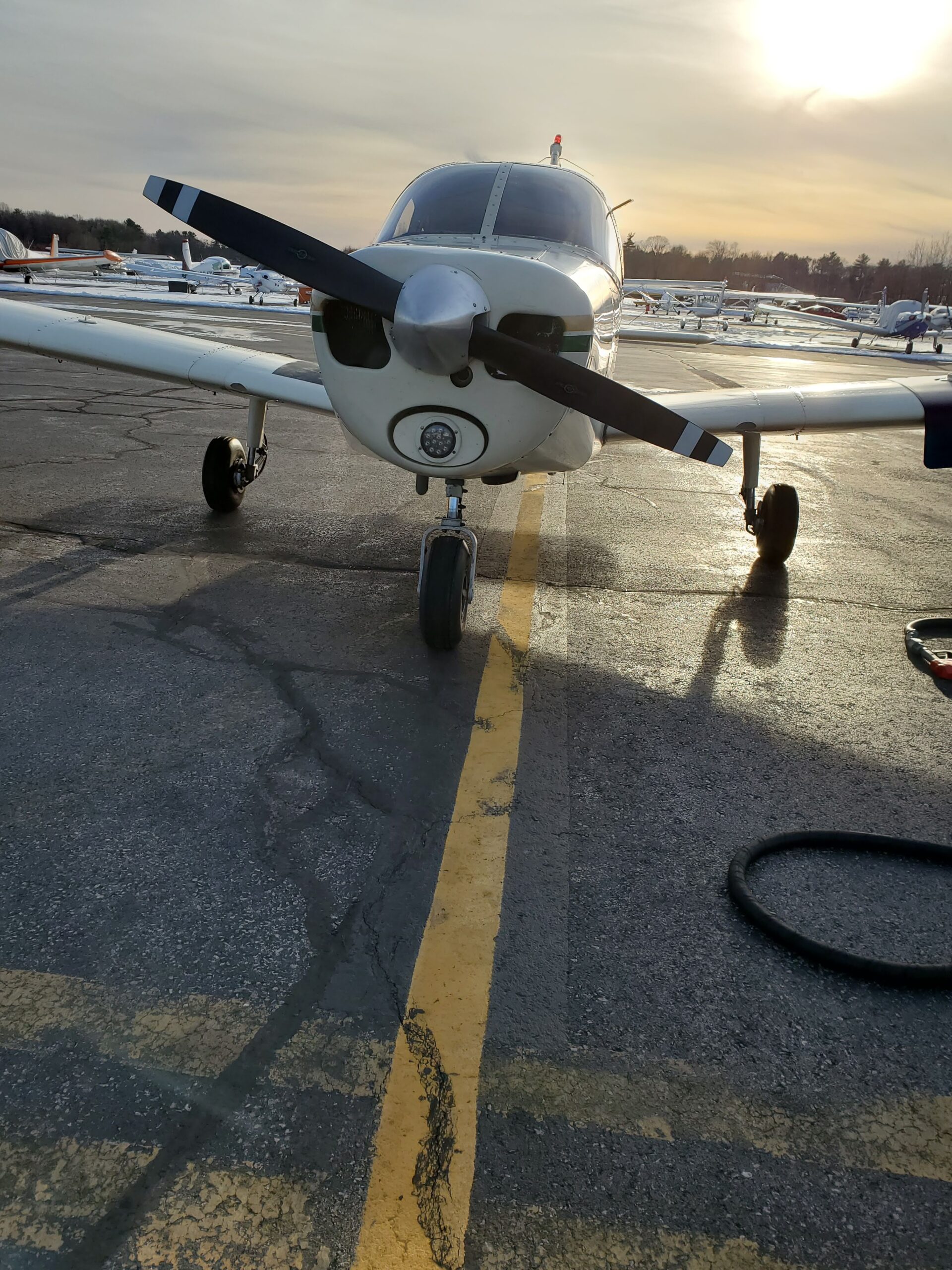Beyond the locked gate of the airport, the plane waits patiently out on the tarmac. It’s thirsty for fuel. I punch in the code and push open the chain-link door as it squeals on its tired hinges.
Filling up fuel in your car is typically not a fun activity. But, somehow, it’s different with a plane. Perhaps it’s the fact that the tank is just the inside of the wing — you can see (and hear) quite clearly as the fuel laps up against the edges. I watch the blue tinged fuel slowly creep its way up to the top. As it nears, I slowly let up on the pressure of the filler handle and let the fuel slow to trickle. As the vapors vent, I smell the distinct odor of AvGas.

Climbing under the wing and bracing myself against the wheel, I drain the fuel sump to check for contaminants. I lift up the fuel inspector to the sunlight to check for the characteristic blue tint of the fuel. In the old days, some would simply dump the 50-odd mL of fuel on the ground, but today, conscious of the environment and the rising cost of fuel, most pour it back into their tank, including myself.
During this whole process, a few might even don protective rubber gloves as to avoid touching the fuel. After all, unlike automative gasoline, AvGas — or more appropriately 100 Low Lead (100LL) — is still contains trace amounts of tetraethyl-lead. The additive serves several purposes, including preventing engine knock and detonation as well as for lubrication of valves.
This situation plays out every day at nearly all airports in the United States and the rest of the world. Yet, according to the United Nations Environment Programme in their August 30 press release, “the era of leaded petrol is over.”
As others have pointed out, that’s not exactly the case. The UN EP announced that leaded fuel was finally phased out in Algeria, one of the last holdouts for automotive gasoline. However, leaded fuel in the form of 100LL AvGas is ever-present, exhausted by the light planes flying in the skies directly overhead.
Unfortunately, there currently exist no viable alternatives to leaded AvGas, which has a higher octane rating of 100 compared with the 87 of regular automative gasoline or 93 of premium automative gasoline. Consider also that most planes were designed in the 1950s and remain essentially unchanged in their powerplant designs since then, and the market is ripe for disruption. I think this highlights the need for significant research into developing alternatives that could be a drop-in replacement for traditional 100LL.
Dossier
“Scrap the proposed $1,000 landing fee. Keep general aviation alive.” by Sahil Nawab, June 6, 2021. http://www.sahilnawab.com/blog/scrap-the-proposed-1000-landing-fee-keep-general-aviation-alive/
“Here’s Why Planes Still Fly With Leaded Fuel,” by Mercedes Streeter, September 6, 2021. https://jalopnik.com/heres-why-planes-still-fly-with-leaded-fuel-1847615621
“Era of leaded petrol over, eliminating a major threat to human and planetary health,” August 30, 2021. https://www.unep.org/news-and-stories/press-release/era-leaded-petrol-over-eliminating-major-threat-human-and-planetary

Zainab
Nice read!
Sahil
Thanks!